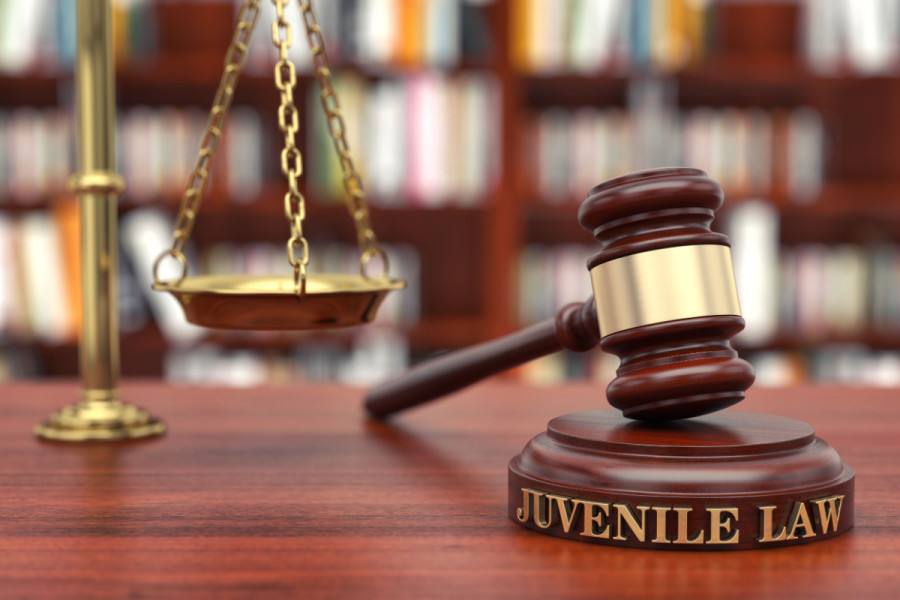Columns
Juvenile delinquency: Legal and practical gaps
Some children are held for crimes they did not even commit, and they do not know how to get out.
Shailu Sharma & Sadikshya Nepal
In Nepal, juveniles were previously prosecuted in ordinary courts under the criminal law. Only after the country issued its first juvenile law—the Children’s Act 1992—did the procedure for handling juvenile justice come into effect. After nearly three decades, the Act Relating to Children 2018 replaced the 1992 law, and promised to revise and consolidate laws and ensure children’s best interests while also promoting, safeguarding and upholding juvenile rights. The law, raising the minimum age for children from 16 to 18, not only adopted the standard set in the UN Convention on the Rights of the Child but also made a groundbreaking arrangement for children under 18, stating that they shall not be held criminally liable for any act performed against the law.
Through these practices, using the criminal justice system in juvenile-related issues was gradually demolished, leading Nepal to enact a distinct child protection statute with distinctive provisions in the children’s best interests. However, many provisions under the Act are not followed correctly in the present justice system.
The gaps
The provisions in the 2018 Act include using the language the children are comfortable with when communicating with them. If necessary, an interpreter can be used to facilitate this communication. Additionally, the government of Nepal may create an observation chamber for children under investigation for an offence. Until the observation chamber is established, a separate room shall be provided in each district police office, according to the Act. Children under investigation shall have access to counselling from a child psychologist and other necessary psycho-social support. If a family member wishes to stay with the child in the observation chamber, the investigating authority may allow it, with specific time and conditions outlined. The establishment, operation, management and monitoring of the observation chamber shall be prescribed in accordance with provisions related to the best interests of children. Unfortunately, these legal provisions and their application do not always align, as observed in practice.
There is also a reference to the juvenile bench in clause 30, sub-clause 3 of the Act Relating to the Children, which states that until a juvenile court is formed, a juvenile bench shall be established in each District Court for juvenile court-related proceedings, hearings and resolutions. A juvenile bench consists of a district judge, a social worker and a child psychologist or specialist. However, neither the juvenile court nor the idea of a juvenile bench is considered inside the courtroom. A regular bench consisting of a district judge hears cases concerning children in conflict with the law (minors who have become involved in illegal activities, and these children are typically under 18). However, the absence of social workers or child psychologists/specialists throughout the hearing demonstrates the real picture of Nepal’s legal system.
Another provision in section 37 of the Act clearly states that the cases related to children in conflict must be resolved within 120 days of the case filing, and the proceeding and adjudication of such cases must be based on continuous hearings. This legal system embraced the viewpoint that cases involving children should be considered differently than typical or adult cases because children lack the physical, mental, intellectual and emotional maturity of adults. Further, it demands determination of the period for settling and special arrangements for continuous hearing and disposal of the case within the time limit.
However, cases are not promptly resolved, which creates numerous obstacles for children in conflict with the law and those directly or indirectly related to them. Similarly, many children who have broken the law and are being held in a child correctional facility are unaware of how they plan to get home and are susceptible to various mental health issues that could lead to suicidal ideation. Likewise, some children are held for crimes they did not even commit, and others are held for misdemeanour crimes.
During the trial period, when orders are issued to detain juveniles, they are sent to Juvenile Reform Homes until the court makes the final decision. However, a significant concern arises regarding how long they must wait in such homes. When the Advocacy Forum visited child correction homes in July and August 2023 and talked with more than 100 children, they noticed that children were desperate to return home. Moreover, these children faced physical and mental issues, with many of them having no clue about hiring lawyers, the function of lawyers, and the justifications for their presence in the correctional homes. The juveniles’ lack of legal knowledge is a serious concern. They require appropriate guidance and assistance to comprehend their legal rights and procedures involved in their cases. Ensuring that they have access to legal counsel and are knowledgeable is crucial.
Way forward
The Supreme Court has repeatedly laid a precedent for protecting children or children who are in conflict with the law. In a recent case, Advocate Pushpa Raj Poudel vs Sindhuli District Court and others, the Supreme Court clearly stated that juvenile cases should be settled within the limit prescribed by law—102 days. Despite clear legal provisions and such a historic judgment made by the Supreme Court, there are instances where children have been waiting for years to receive their final verdict.
As we celebrate Children’s Day in Nepal today, the government, educational system and legal institutions must ensure that juveniles know their rights and get legal education. The children in conflict with the law should have basic requirements, including the right to education, health, maintenance, proper care, sports, entertainment and overall personality development from the families and the state. No child should be subjected to physical, mental or other torture. As child correctional homes fulfil none of these requirements, the court should be accountable for fulfilling all the basic needs and timely decision-making in juvenile cases so that they can be brought up in a safe environment.




 6.84°C Kathmandu
6.84°C Kathmandu
















